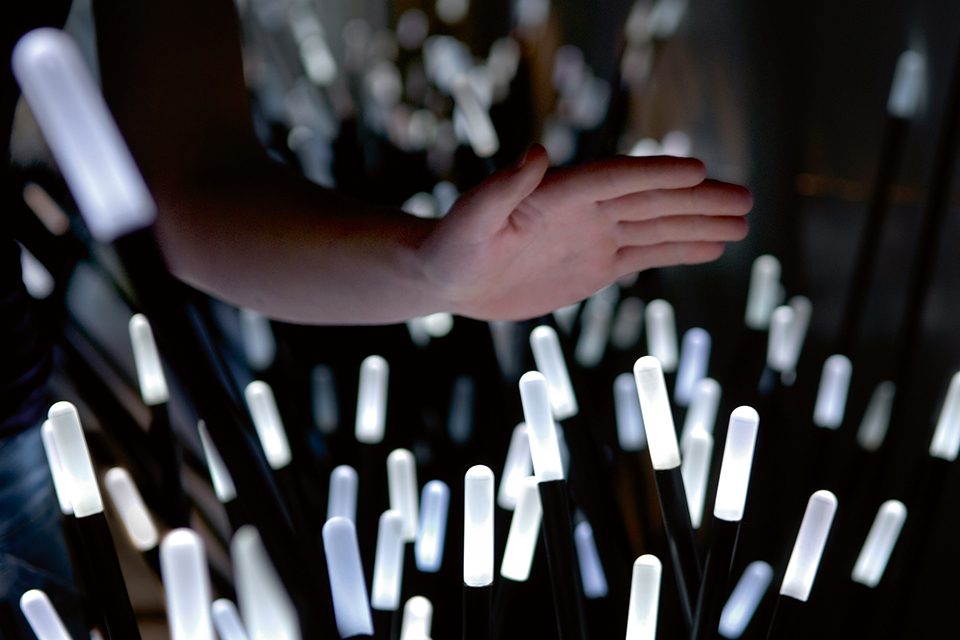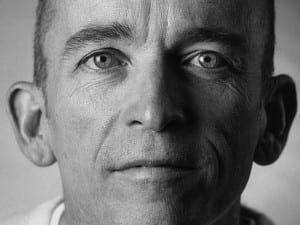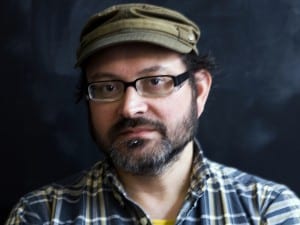Gerald McMaster is one of the Artistic Directors of the Biennale of Sydney 2012. Along with his co-curator, Catherine de Zegher, created an event that re-examines wider narratives. With over 100 artworks presented – half being new – this year’s Biennale of Sydney is exciting and thought-provoking. The Biennale of Sydney ran from 27 June – 16 September. www.biennaleofsydney.com
How does the Biennale of Sydney differ from its many contemporaries?
There are over 150 biennales across the globe, so being distinct can be difficult. The Biennale of Sydney is a significant celebration of contemporary art in the Asia Pacific region. It was also one of the first to break away from the nationalist pavilion models and select an Artistic Director to oversee the articulation of a vision. It’s also a launching platform for artists who have gone on to become well established within the art world. Sydney as a city is an unquestioned destination for visitors from around the world and so it goes without saying that the city is built for being an international venue for contemporary art.
This is the first time that the Biennale has appointed a curatorial duo to direct the programme; what has that collaboration been like?
Catherine de Zegher and I have been friends and colleagues for many years. Our ideas and approach to curating are very similar, to the degree that we began discussing the potential of working on something together that would be rather large. Catherine’s strength has been working with female artists; mine has been with working for historic and contemporary aboriginal artists. These underrepresented and marginal voices needed to come together to influence change. Though we didn’t focus on this point for our exhibition, the strategy did inform how we would go about articulating the ideas.
This Biennale is titled All Our Relations; can you talk us through the discernible themes in this year’s exhibition?
There is not one particular theme in the exhibition though many works touch on current issues that affect us all, or are specific to particular regions. Catherine and I decided against taking the road most travelled, such as large-scale overviews of the most current art along with big names; we were much more mindful of creating a stronger curatorial position. Sometimes we found existing or older works more in tune with the present landscape; other times we were interested in artists who have returned to the idea of skill or craft that is articulated through a present-day lens. We wanted to position artists and these ideas at the foreground of our curatorial practice because it is their ideas that constantly inspire us and provide us with new and meaningful stories.
The artists share a sense of compassion, empathy and drive for change. How does the 18th Biennale contribute to these ideas?
There’s a certain malaise with modernity and its global impact on the 20th century. Now that we’re stepping into a new century there seems to be considerable rethinking, retooling and re-articulating of the character of modernity for its penchant for breaking, fragmenting and disrupting often through violent means. What All Our Relations offers is a new kind of thinking that’s more in terms of healing or recomposing – of compassion and empathy for the world around us that is not just one another but our natural world as well.
Was it a challenge to maintain consistency with over 100 artworks presented this year?
The extraordinary opportunity to see so much art was at first daunting, but once we got started we gathered a momentum that made decisions much easier. Finding a range of diversity from across the globe wasn’t so much the challenge; rather it was ensuring that we achieved the right connections between the artwork and the physical spaces where it will be shown. We were also excited about offering artists an opportunity to create new work for the Biennale. In fact, the proportion of newly commissioned works is almost half.
It’s fantastic to hear that nearly half the artists will present new works. What are you most looking forward to seeing in-situ?
There are many new works to be discovered on Cockatoo Island. This space has become a magnet – not just for audiences but for artists who are clearly interested in working in unusual spaces outside the white cube. In the Turbine Hall, Reinier Rietveld presents a masterful sound installation, which is complemented by a light and fog work by Belgian installation artist Ann Veronica Janssens. There is also a multi-layered collaborative work where two artists – Ed Pien of Toronto and Monika Grzymala of Berlin – ask visitors to immerse themselves in two immense paper installations. Beijing based Li Hongbo will present Ocean of Flowers, a 17,000 piece work in honeycomb paper of weapons that, when unfolded, reveal floral shapes. Also, Phoenix-based Postcommodity will cut a hole in the floor of the Art Gallery of New South Wales, which is rapidly becoming a buzz. It’s all very exciting.





